There hasn’t been much shoujo anime in the recent seasons, but I managed to find some.
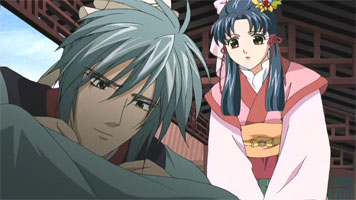 Shuurei (right)
Shuurei (right)
Saiunkoku Monogatari is a story set in the imaginary country of Saiunkoku. In the first series of 39 episodes, Shuurei Kou, a girl from an educated family that has fallen on difficult times, aspires to join the administration, a job normally forbidden to women, but is offered instead a position with potentially great rewards, as consort to the young and irresponsible Emperor, charged with teaching him to be a responsible ruler.
In the second series (also 39 eps) Shuurei has a position as Governor of the Sa (Brown) province. There are suggestions that she be married to a member of another prominent clan in an advantageous political union.
Superficially, Saiunkoku looks startlingly like a 12 Kingdoms side-story, with similar buildings, similar costumes, and even similar-sounding province names. However it’s rather lighter in tone, with romance and comedy as well as political intrigue. Saiunkoku is based on 12 light novels by Sai Yukino. I have only seen a couple of episodes of series 2, but it looks like an interesting anime. The first series is being released in the US on DVD.
Pretty Cure Max Heart: I’m sure I’ve seen an earlier series of Precure… In this one the reset button has in effect been pressed and the two Precure girls are starting a third year at junior high. The Queen of Light passes over and the Dark King has a resurrection. There is a hilarious scene where a giant robot thing materalises and chases the two girls down the street till they get a chance to transform into “Pretty Cure” and start throwing the robot about, eventually defeating it. Nice dresses too.
I’m no sure if this is quite my sort of thing – the target audience looks to be younger girls, but the costumes look good, the lead character is rather cute and it’s very amusing.
Sugar Sugar Rune – two young witchlets, Chocola and Vanilla are friends and also rivals for the throne of the Demon Kingdom. After being given their wands, they are sent off to the human world to collect the hearts of unsuspecting humans – the one who collects the most being the winner. On arrival, they meet their demonic mentor, Rockin’ Robin (a pop star), who enrols them in a regular school, and shows them how heart-collecting is done. The duo have contrasting personalities.
SSR is an action filled comedy principally aimed at younger girls.
Sasami Mahou Shoujo Club As a Tenchimuyo spin-off, this is essentially shoujo-by-title. Sasami is a hereditary magical girl who lives un-noticed among the human population, having been forbidden by her parents to use her magical powers. Her life changes when an new red-haired teacher called Washu arrives.
I don’t know much about this series, but you ought to see the scene where Washu takes a live winged rabbit and two large knives out of a bag and announces that she is going to demonstrate a dissection. (Series now licensed by Funimation. )
Kaze no Shoujo Emily: Another case of shoujo-by-title, though in this case it’s adapted from the novel “Emily of New Moon” by Lucy Maud Montgomery. In this version, Emily is orphaned when her father dies, and is taken in, rather grudgingly, by her late mother’s eldest sister. Emily is a highly imaginative child with aspirations to be a writer (rather reminiscent of Montgomery’s better-known heroine, Anne), and has a tendency to be rather outspoken. She is also very fond of her cat, Saucy Sal. A clash is thus set up between her and her chilly aunt, who dislikes mouthy little girls and hates cats.
Promising.
 Sora (center) and friends
Sora (center) and friends
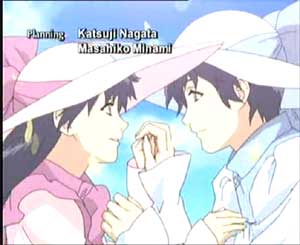 Kurau & Christmas
Kurau & Christmas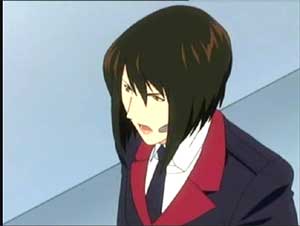 Ayaka Steiger
Ayaka Steiger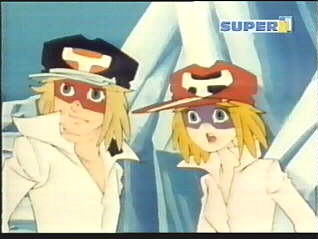 Yattaman & friend
Yattaman & friend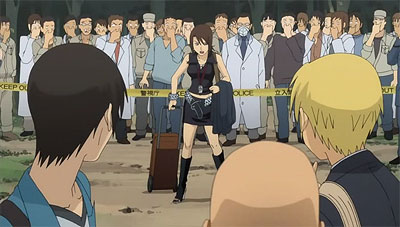 Hasegawa returns
Hasegawa returns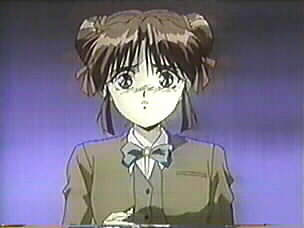 Miaka (from TV series)
Miaka (from TV series)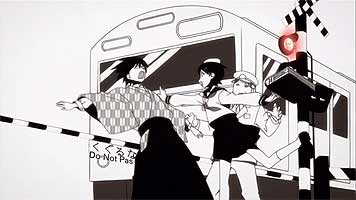 Failed suicide
Failed suicide Shuurei (right)
Shuurei (right)